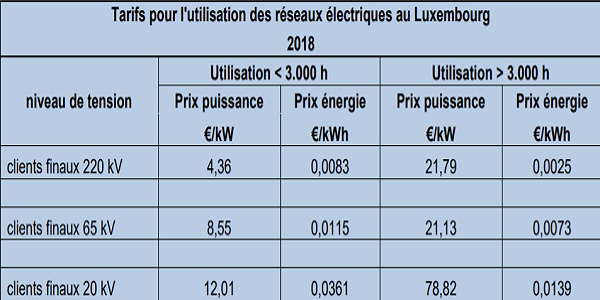 Credit: Institut Luxembourgeoise de Régulation
Credit: Institut Luxembourgeoise de Régulation
The beginning of this year saw the introduction of increased electricity tariffs in Luxembourg.
As of 1 January 2018, the electricity network usage rates increased for an average household by almost 17% compared to 2017, thus returning to the 2016 rates.
However, the increase in rates is offset by the reduction of the contribution to the compensation mechanism (from 3.18 ct/kWh to 2.54 ct/kWh), a legal fee to finance subsidies to power generation plants based on renewable energies. Professional consumers connected at medium or high voltage will therefore experience an increase in their network costs over a certain limit.
The increase in the level of network usage tariffs is closely linked to the evolution of electricity system costs. On the one hand, the costs for services relating to the stability of the Luxembourg electricity system, provided by the German transmission network, have increased significantly. On the other hand, significant investments from grid operators are needed to secure supply and prepare for the transition to more efficient use of energy.
Network costs represent the cost of transporting and distributing electricity from production sites to the end customer. These rates correspond to approximately 45% of the total price of low voltage electricity.
Since 2017, tariffs for the use of electricity networks are identical throughout the country. In addition, the network charges of a household are only partly proportional to the electricity consumption. The fixed monthly charge is due regardless of the actual consumption and even in the absence of an electricity consumption. This fee helps to finance the costs of networks whose functioning is essential to guarantee security of supply in electricity. Due to the introduction of the fixed monthly fee, consumers with very low annual consumption or irregular consumption have seen an increase in their bill.








